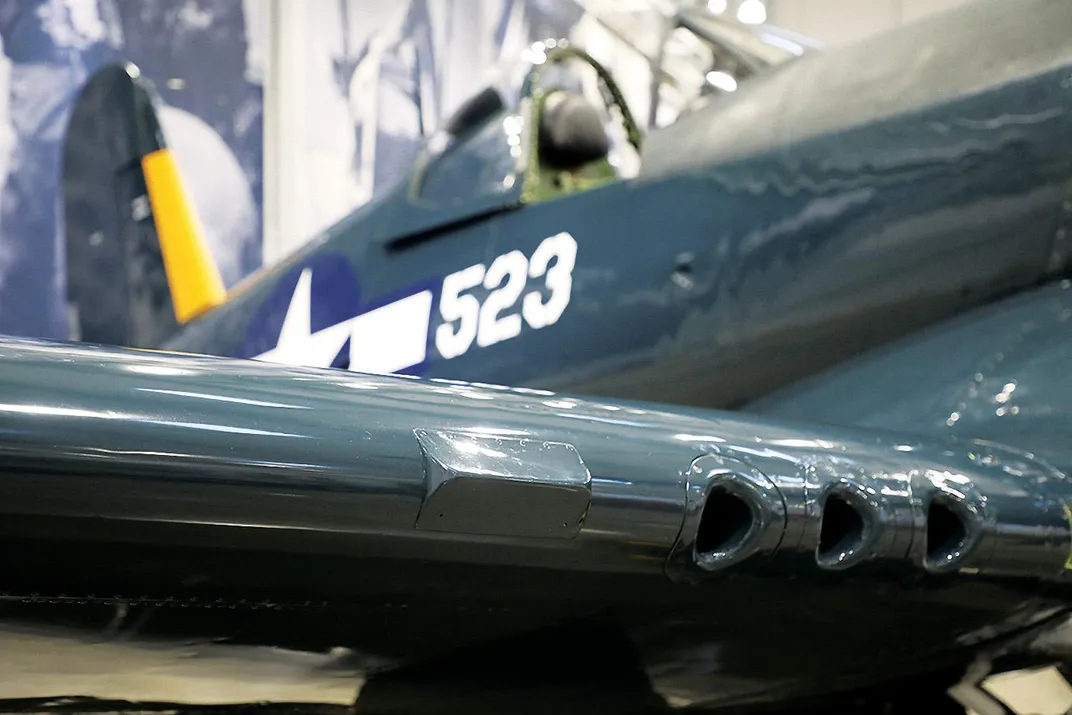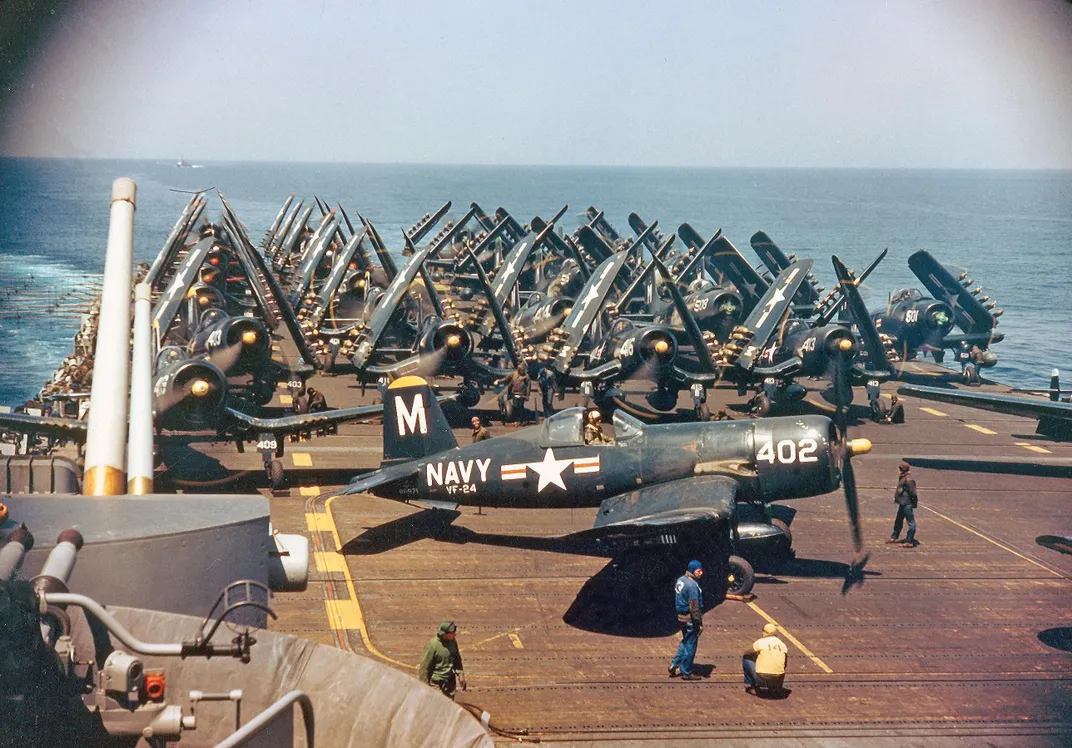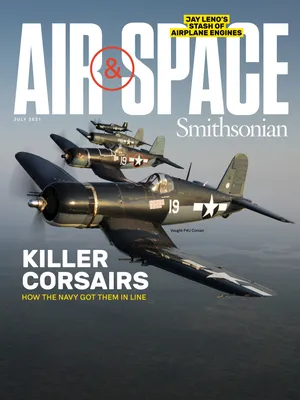How the Navy Tamed the “Killer Corsair”
A little piece of aluminum solved the WW2 fighter’s vicious behavior problem.
/https://tf-cmsv2-smithsonianmag-media.s3.amazonaws.com/filer/c3/cc/c3cc8a53-7174-4dc0-9d6c-2019ccfc3ebc/crop_corsairs.jpg)
The initial carrier-landing qualifications for the Chance Vought F4U Corsair were a disaster. In fall 1942, Lieutenant Commander Sam Porter tested the feasibility of operating the Navy’s bent-wing fighter from the deck of the escort carrier USS Sangamon steaming in the Chesapeake Bay. After four terrifying landings, he called it quits, certain the airplane was on the verge of killing him.
The Corsair’s cockpit was so far back in its fuselage that Porter found it difficult to see the Sangamon’s landing signal officer on the port side of its deck. The fighter’s ultra-long “hose nose” made it nearly impossible for the pilot to get timely feedback to make corrections to his approach.
When the Corsair thumped down on the deck, the landing gear’s oleos—shock-absorbing struts—bottomed out, then bounced back like giant pogo sticks, causing the airplane to bound over the arresting wires. If other aircraft had been parked on the forward part of the Sangamon’s flight deck, there would have been a pile-up.
But the compromised visibility and wild bounce didn’t frighten Porter as much as the airplane’s behavior during the moments in between. Seconds from touchdown, flying slow and low, with flaps, gear, and arresting hook buzzing in the slipstream, the Corsair suddenly stalled. And the way it stalled would have terrified any pilot.
As the airspeed bled off, the left wing—with almost no advance warning—lost lift, rolling the airplane abruptly to port.
Porter rightly feared that when a less experienced aviator was faced with the Corsair’s nasty behavior, he would instinctively jam the throttle forward in a desperate attempt to grab raw horsepower to claw his way out of trouble. The sudden torque unleashed from the fighter’s powerful R-2800 engine and its 13-foot, 4-inch propeller would exacerbate the bank to the left, promptly flipping the aircraft onto its back just feet above the waves. That would have been a deadly predicament that not even the most skillful flier could escape from.
As currently configured, the Corsair was a death trap, living up to its nickname: “Ensign Eliminator.”
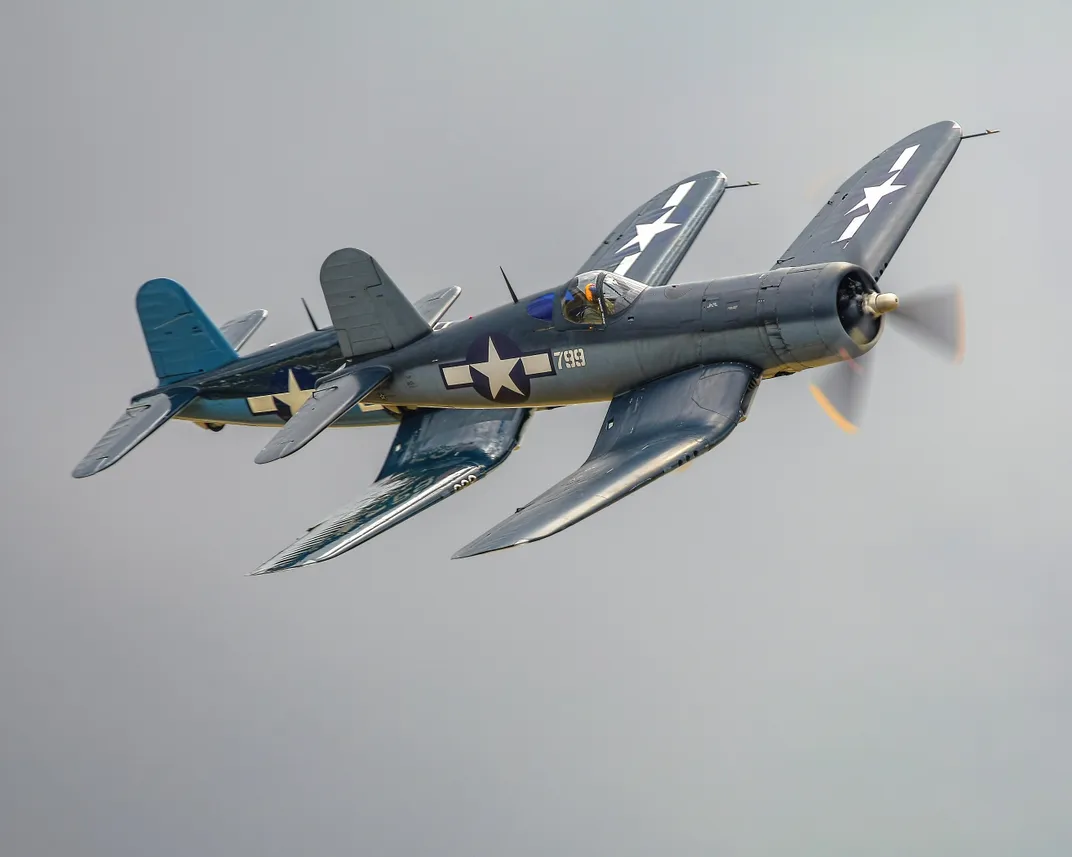
The vicious asymmetric stall was quickly mitigated once the forces acting on the aircraft were fully understood. The fighter’s monstrous propeller blades, digging into the air, shoved a twisting spiral of prop wash aft that resulted in dissimilar airflow over the wings. The left wing lost lift first, and it happened fast. But counteracting that stall was tricky. The Corsair descended to the deck at a dramatic nose-up angle of attack (up to 17 degrees). At the slow speed required for landing and in that unusual attitude, the airplane’s control surfaces were all but useless in those crucial moments before touchdown.
Vought engineers and the Navy analysts participating in the carrier trials realized that they would have to diminish the airflow over the “good,” or starboard, wing—causing the Corsair’s wings to lose lift simultaneously. In order to do it, a spoiler, or “stall strip,” was affixed to the leading edge of the starboard wing, just outboard of the gun ports. Only about six inches long and about three inches wide, the simple triangular thingamabob degraded the aerodynamic performance of the right wing and made its lift roughly match that of the left. Thereafter, the Corsair behaved predictably; that is to say, it stalled symmetrically.
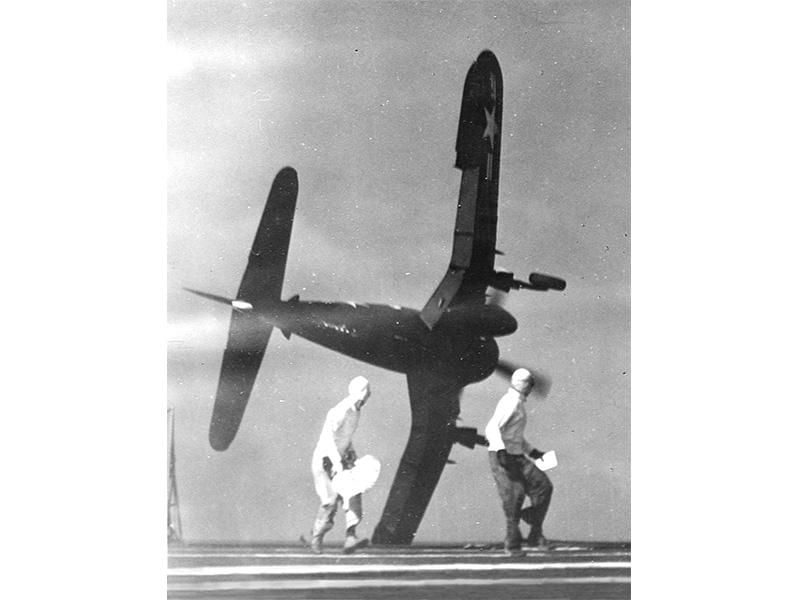
In late 1942 and early 1943, sailors fashioned the first versions of the stall strip from simple blocks of wood for Corsairs already in service, while assembly lines at Vought, Goodyear, and Brewster soon added factory-built metal stall strips to each new aircraft.
Despite more hair-raising attempts to make the Corsair carrier-ready, conducted by Navy squadrons VF-12 and VF-17, most of the original aircraft found a home in Marine Corps combat squadrons flying from—and more importantly, landing on—island bases.
Over time, Vought engineers and men in the field implemented upgrades to the promising but troubled fighter. Greater air pressure in the airplane’s landing gear oleo easily eliminated much of the pronounced bounce. For a better view from the cockpit, designers replaced the “birdcage” canopy with a frameless clear “bubble.” The additional head space allowed the pilot’s seat to be raised by eight inches. An improved F4U-1A was in the Pacific with the Marines in the summer of 1943.
But it was the British Royal Navy’s Fleet Air Arm who came up with the concept that brought Corsairs to sea duty for good. The pilots developed a long, curving landing approach to keep the carrier’s deck in sight until the last moments before touchdown.
The Corsair did not operate from U.S. Navy carriers until 1944. Even with improvements, the fighter was never a pussycat during landing. Green pilots still found ways to slide, bounce, or flip their Corsairs in those vulnerable seconds of final approach. Vought designers had sacrificed docile handling qualities for the sake of maximum speed, ceiling, and range.
When the bugs were ironed out, the F4U hit its stride. Vought’s venerable “U-Bird” went on to become one of the best naval fighters of World War II, racking up 2,140 victories in aerial combat. Only 189 Corsairs were lost to enemy aircraft. Medal of Honor recipients “Pappy” Boyington, Robert Hanson, and Kenneth Walsh each claimed more than 20 victories, making the Corsair nearly as famous as the much-revered P-51 Mustang and flashy P-38 Lightning.
As the war progressed, the range of duties for the Corsair broadened. Like today’s multi-role aircraft, the Corsair could protect the fleet from enemy air assaults and it could assume the attack role, lugging bombs to targets like Iwo Jima, Okinawa, and the Japanese home islands.
Corsairs dropped 15,621 tons of bombs on the enemy, which made up 70 percent of the total bombs delivered by all U.S. fighters in any theater. This versatility, combined with stellar performance and the potential for future upgrades, was one of the many factors that helped keep the Corsair flying in Navy and Marine Corps squadrons long after its stablemate, the Grumman F6F Hellcat, disappeared from fleet service.
When fighting broke out in Korea in 1950, the Corsair was still on the front lines, often supporting troops on the ground with napalm, bombs, rockets, and gunfire. Though primarily operating in the role of close air support, Corsair pilots tangled with Russian-made fighters over Korea and were even dispatched in darkness to track down enemy harassment flights using radar. In 1952, Lieutenant Guy Bordelon Jr. became the U.S. Navy’s only Korean War ace when he shot down his fifth intruder in his Corsair night fighter nicknamed “Annie-Mo.”
In September of that year, Captain Jesse Folmar plunged his aging F4U-4B Corsair fighter into a turning dogfight with a MiG-15 jet. He came out on top, downing the speedier and more advanced aircraft with a burst of 20mm fire. His celebration was short-lived, as more MiGs swooped in, blasting his Corsair. Folmar parachuted into the ocean, where he was almost immediately rescued.
Despite its long and laborious development process, the Corsair’s exceptional endurance at the dawn of the jet age was unparalleled. The last of 12,571 Corsairs rolled off the assembly line on January 31, 1953, earning the distinction of the longest production run of any piston-engine fighter in American history.
